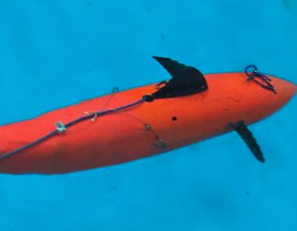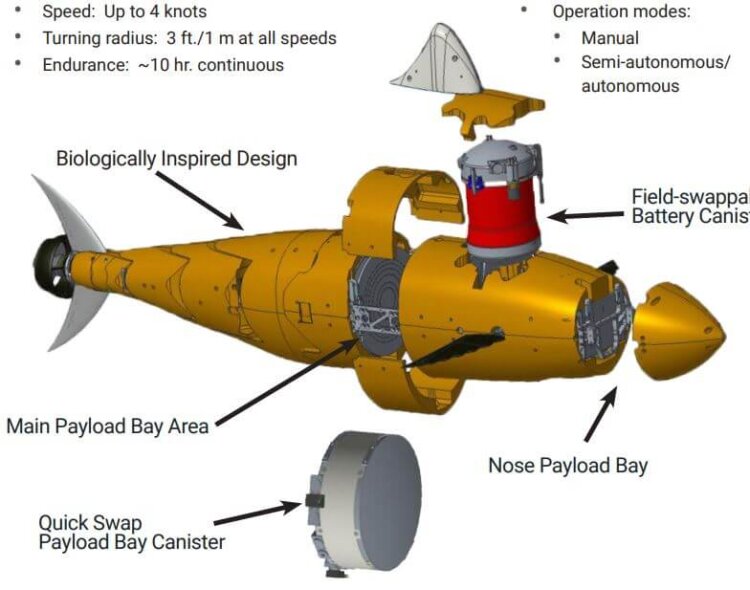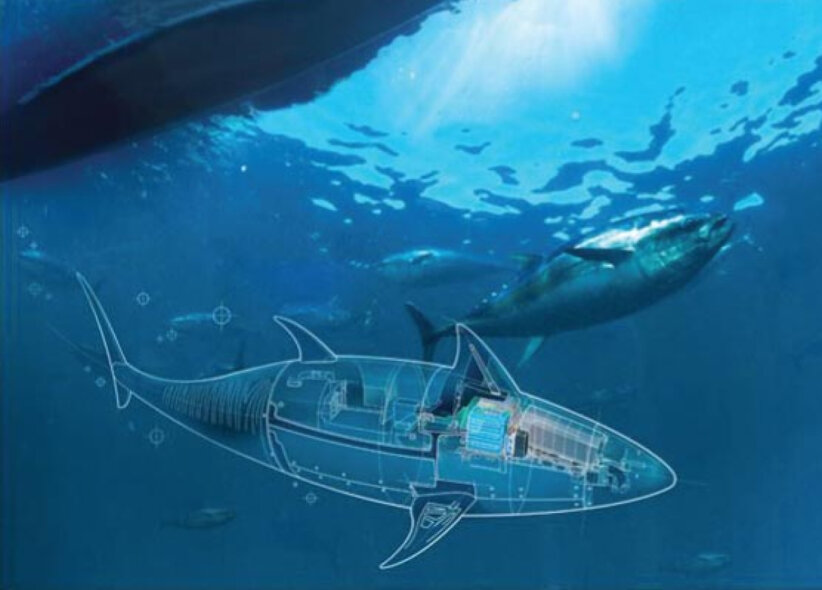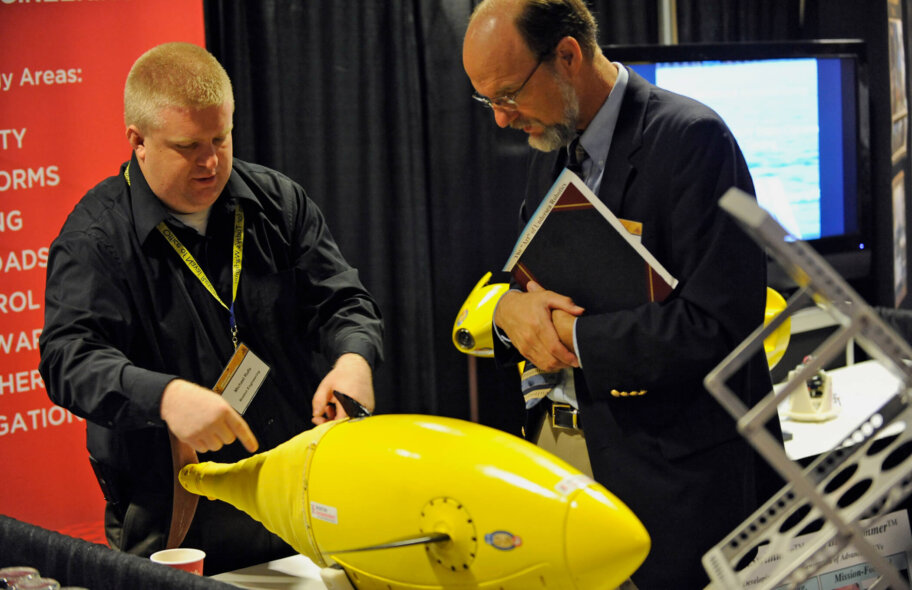BIOSwimmer™ Unmanned Underwater Vehicle (UUV)
Performance and Agility for Security, Inspection, and Search
The BIOSwimmer UUV applies the dynamics of biological fish to advance underwater search, inspection, and to operate in constricted areas inaccessible by other vehicles.
The BIOSwimmer addresses homeland security and commercial maritime capability gaps in littoral waters. BIOSwimmer’s powerful features enable users to:
- Increase data collection in confined areas

(e.g., close, steady sonar scans of
ship hulls and piers) - Reduce diver risks associated with
manual underwater operations - Perform a breadth of missions (modular
design and multi-payload support)
Provide high performance in harsh
environments - Collect data (live or stored)
Operate semi-autonomously, autonomously,
or manually (override for additional inspection) - Launch and recover rapidly









